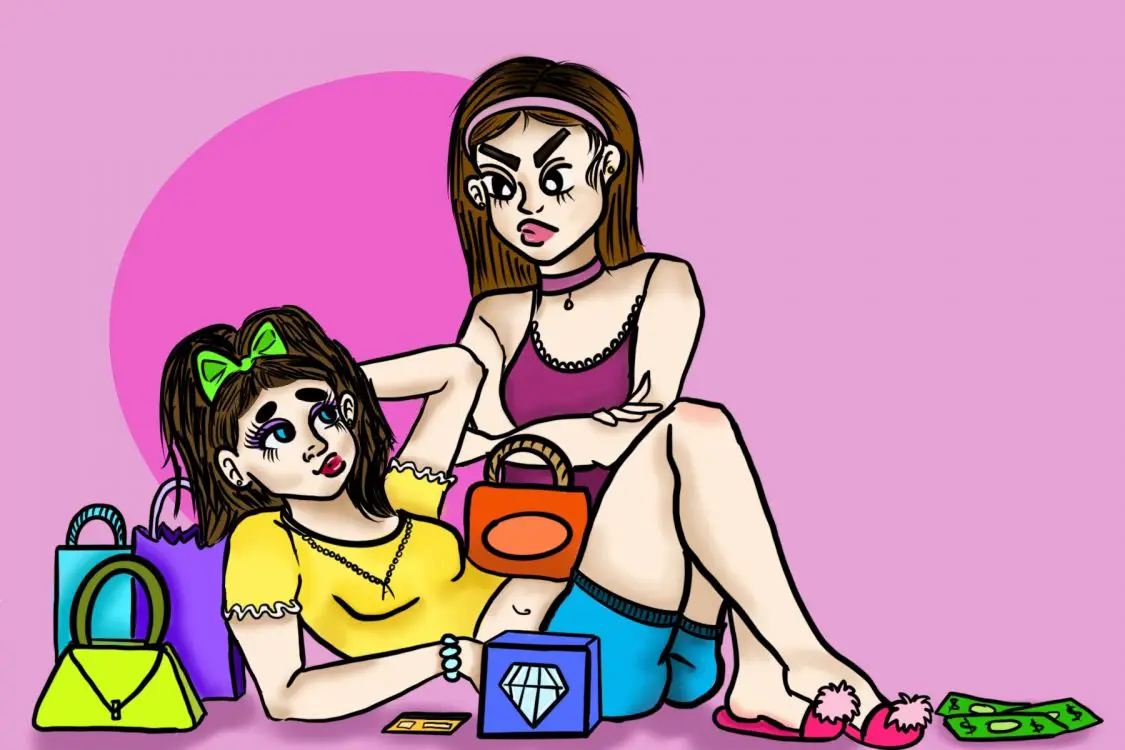Minimalism is a trend that dates back to the early days of the Transcendentalist movement, when Thoreau wandered through the woods of Massachusetts, looking for answers to a simpler life. He believed that separating himself from the industrial blight rapidly spreading through the north, and finding solace in nature — rather than in possessions — was “deliberative and necessary” for a peaceful way of life.
This embrace of simplicity once again became popular in the 1960s and ’70s art world. Artists began to resist traditional forms of fine art, breaking away from normal, constricting ideals to instead depict sparse landscapes and pieces with wide-open elements, illustrating the joy and beauty that can be found in blankness.
These periods in history prove that less can bring more, and fulfillment can be found without the influence of convention. The overarching idea of minimalism is that these principles ultimately yield a happier way of life by scaling down to find beauty and purpose, rather than the celebrating of economic accumulation that has been ringing throughout the centuries. However, it seems in such a modern-day world, hyper-saturated in consumerism, the bell has been broken.
Through the modern lens, minimalism, much like most lifestyle trends, is something that can only be maintained by those that don’t have to suffer the realities of working-class existence. For the middle class, most stores and businesses offer a dizzying array of choices. This in turn causes consumers to feel overwhelmed, and in most cases, pressured to buy more than they really need. Such expansive selections offer the illusion of freedom, abundance and luxury. In reality, this sort of congestion makes the push to scale back and turn away from materialism seemingly hopeless and impossible, as the light at the end of the tunnel becomes blocked by advertisements.
In contrast, the wealthy are completely out of touch with this sort of experience in our capitalistic landscape. A prime example of this disconnect is shown during an interview with Microsoft co-founder Bill Gates on “Ellen.” He was asked to guess the average prices of everyday groceries and estimated that a bag of Totino’s Pizza Rolls was $22 when they’re really only $8.
This sort of disillusionment causes the lifestyles of the rich and poor to bleed together, making regular consumers feel as if they too can achieve the sort of ad-free single-serving nirvana of the one percent. Consequently, trends like minimalism emerge.
Minimalism itself has been turned into an entire industry, with professional organizers and Ikea storage solutions at the forefront. However, minimalism isn’t actually getting rid of any clutter, but rather finding a way to hide it. For example, the 2019 Netflix series “Tidying Up With Marie Kondo” took the internet by storm. Sales of Kondo’s book “The Life-Changing Magic of Tidying Up” skyrocketed, promising to “spark joy” within its readers as they decluttered, leaving their lives happier and ultimately much more fulfilled.
However, these claims are rather idealistic. Kondo’s ideology is based more on whether possessions bring genuine happiness to their owners — which follows the basic principles of minimalism. But in a capitalistic world, such aspirations seem pointless. Even with the popularity of this fad presented by Kondo, it’s obvious to see how the desire to consume less leads the average person to consume more.
When the average person truly sets out to downsize their belongings, it’s found to be much harder than expected. In a world that values material items, it seems that everything that someone owns automatically sparks a certain memory or manufactured feeling of contentment. In a market that’s so saturated with attempts to appeal to every sort of consumer, there’s no escape from buying meaningless things to obtain temporary joy. This leads to overindulgence, which circles back to wanting to throw more away. It’s a never-ending cycle spurred by the same market that gives the modern consumer a feeling of choice. In reality, it’s much more like a prison.
So, how do we reject this desire to want to scale down? To want to only enjoy things that exclusively give us feelings of pure happiness without the pressure of consumption? For some, the answer is to embrace it. In interior design specifically, a trend of “maximalism” has surfaced. The main principle of this trend is to surround yourself with as many vibrant patterns, objects and aesthetic pieces as possible. It’s supposed to reflect “an attitude of pouring on, not editing out” by rejecting the overarching need for sleekness and simplicity in art and design. Instead, you should surround yourself with beauty and styles that evoke human feelings.
However, while aesthetically such an idea might be more appealing — at least in contrast to the sterile tomb-like homes of the rich like Kim Kardashian and Gwyneth Paltrow, this shift from less to more could have damaging consequences. While in theory, maximalism is about visual excitement rather than seeing how much you can fit into a room, many people could take such a statement the wrong way and reinforce the ideas that already exist within consumerism.
In addition, even if maximalism is about recycling what you already have to fit a more genuine personal aesthetic, trend cycles move in a way that parallels what the public wants to consume. Fast fashion companies, such as Shein and H&M, have both recently launched home décor lines boasting cheap prices and high quality. While such services might be helpful, they ultimately end in waste when a certain aesthetic or style is sent to rot in the trend graveyard.
Maybe none of this matters and people will like what they like and buy what they want. But these constant shifts in consumption have been reduced to nothing more than a trend — like what style of sunglasses are in, or what’s the hottest show on TV. The average consumer has been reduced to a guinea pig in a garbage fire. So, I suppose the only advice that can be given after all of this has been said is to make yourself as comfortable as you can while the world continues to burn.

















